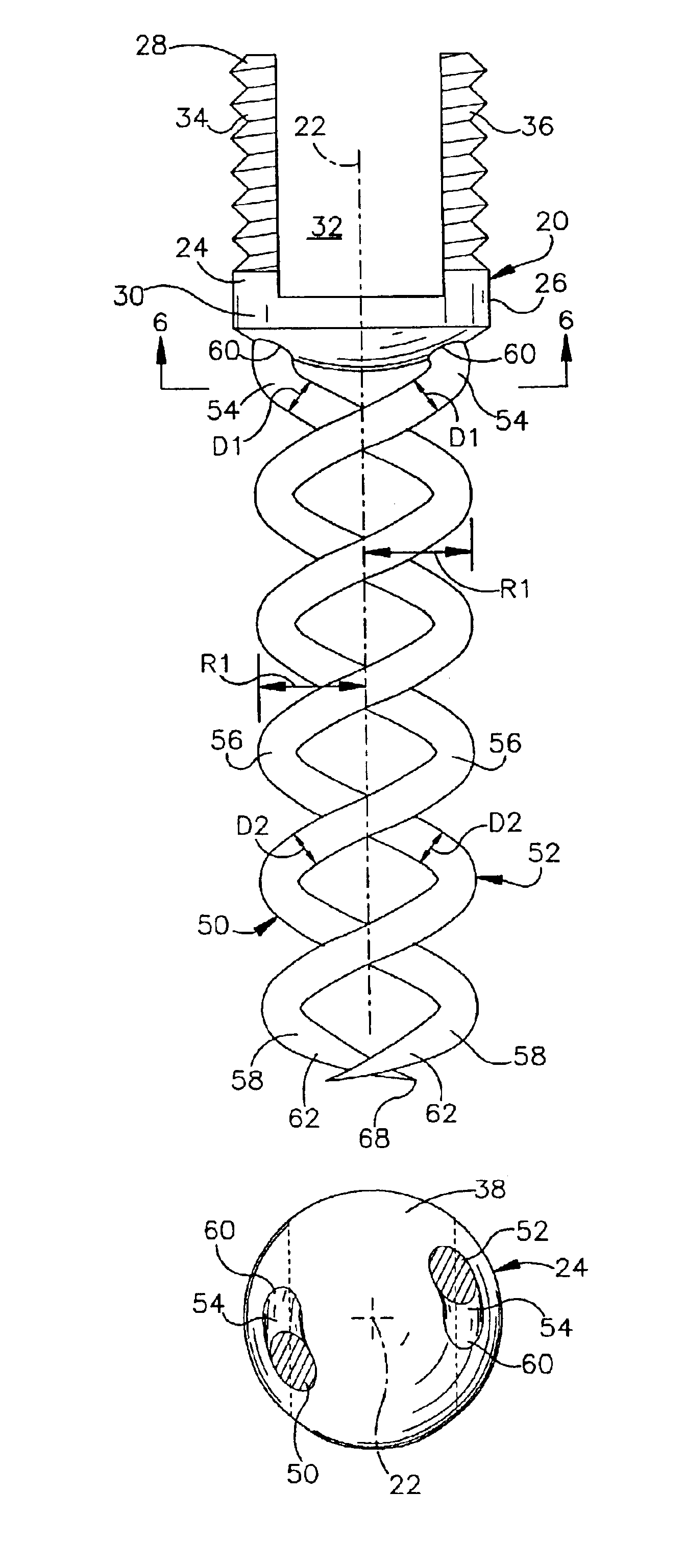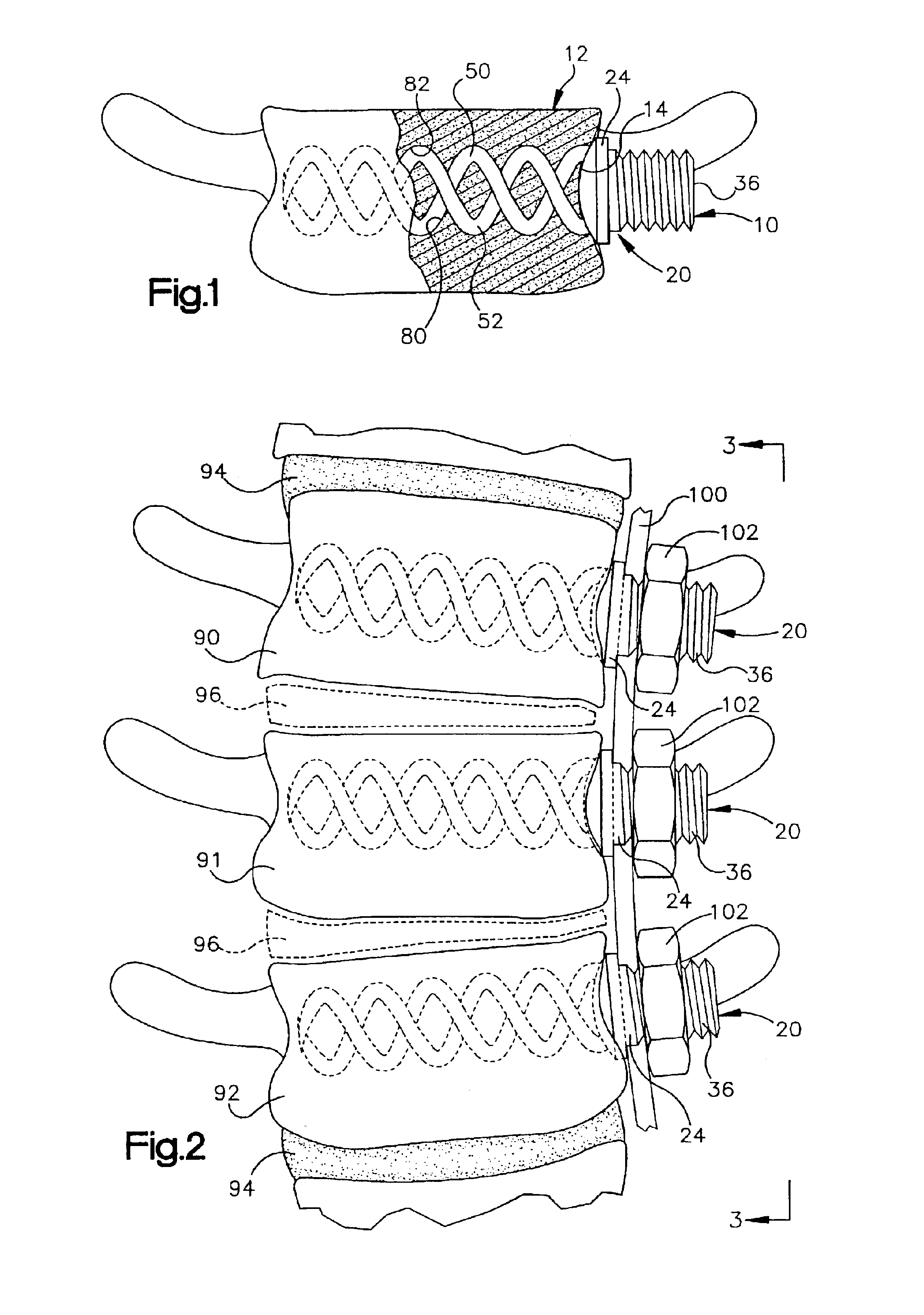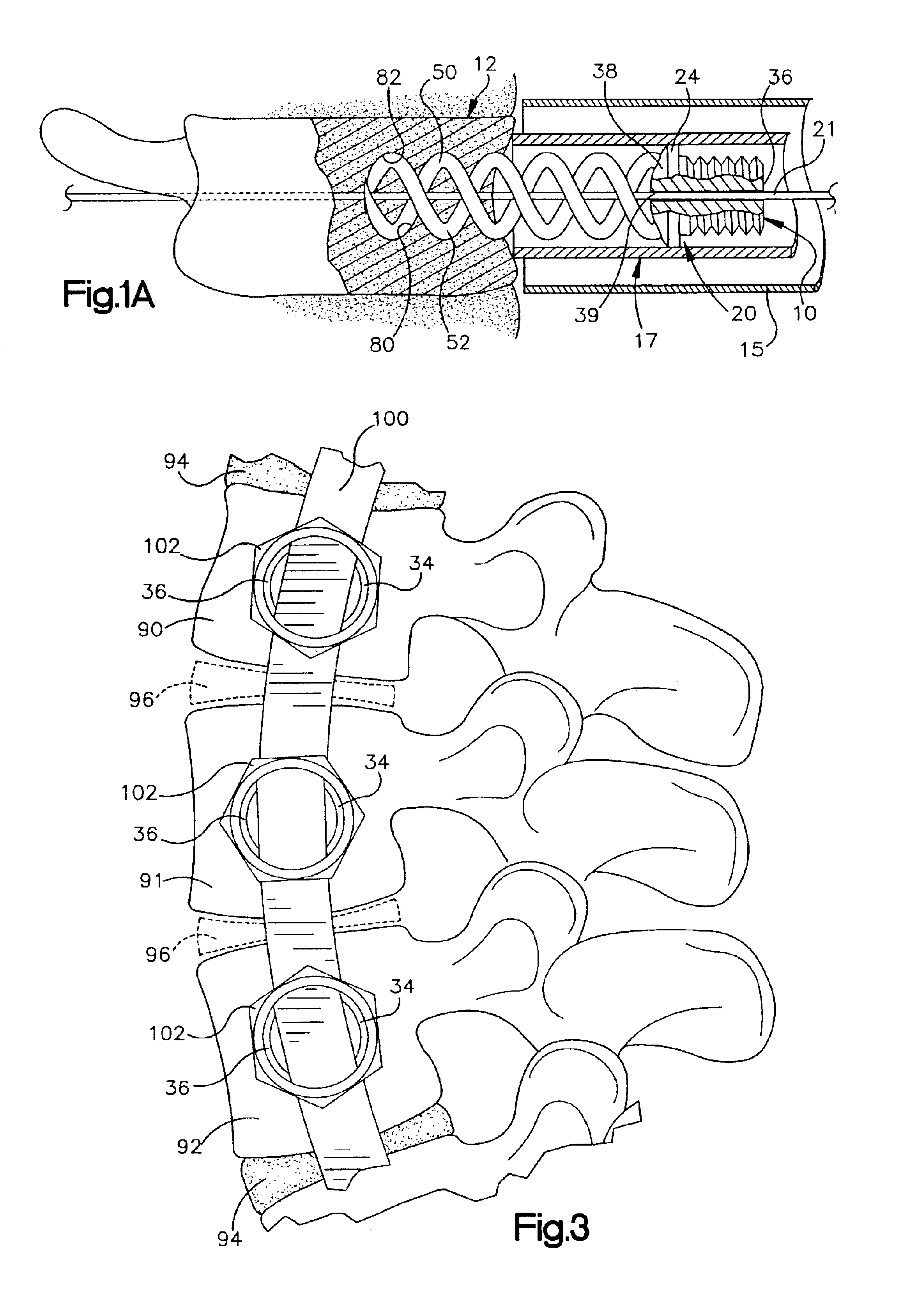Apparatus for implantation into bone
a bone implant and bone technology, applied in the field of bone implanted apparatus, can solve the problems of bone screw dislocation of undesirably large bone, inability to withstand high tensile load without structural failure, and many of the known bone screw types, such as those described above, can be susceptible to toggling in the vertebral body and can pull out of the vertebral body
- Summary
- Abstract
- Description
- Claims
- Application Information
AI Technical Summary
Problems solved by technology
Method used
Image
Examples
third embodiment
[0058] the apparatus 310 comprises an anchor 320 having a platform 324. The platform 324 has a threaded outer surface 330 adjacent a first end portion 332 and a cylindrical outer surface 340 adjacent a second end portion 342. The first end portion 332 of the platform 324 further includes an axial recess 334. The recess 334 has a hexagonal configuration for receiving a tool (not shown) for drivingly rotating the anchor 320. The first and second helical spikes 50 and 52 project from the end surface 38 of the platform 324.
[0059]The apparatus 310 further includes a plate 350 and a nut 360. The plate 350 has a first opening 352 for receiving the portion of the platform 324 which has the threaded outer surface 330. The plate 350 has a second opening 354 for receiving a second anchor 320 (see FIG. 11) or other fixation instrumentation (not shown). When the anchor 320 is implanted in a vertebrae, the nut 360 screws onto the threaded outer surface 330 of the platform 324 to secure the plate ...
fourth embodiment
[0064]The apparatus 410 according to FIGS. 12 and 13 is particularly useful for a corpectomy application in which a damaged vertebrae is removed. As is shown in FIG. 12, after a portion of a damaged vertebrae 460 is removed, a first one of the pair of anchors 420 is implanted into a vertebrae 462 directly above the removed vertebrae 460 and a second one of the pair of anchors 420 is implanted into a vertebrae 464 directly below the removed vertebrae.
first embodiment
[0065]The anchors 420 are implanted in the vertebrae 462 and 464 in much the same manner as the anchor 20 according to the A rotatable tool (not shown) engages the planar surfaces 442 on the attachment tab 440 and rotates each of the anchors 420 to screw the helical spikes 450 and 452 of each of the anchors into the respective vertebrae 462 and 464. The anchors 420 are implanted so that they extend co-linearly along the axis 422. When implanted, the helical spikes 450 and 452 of the anchor 420 in the vertebrae 462 extend in an upward direction from the platform 430 of the upper (as viewed in the Figures) anchor, while the helical spikes 450 and 452 of the other anchor in the vertebrae 464 extend in a downward direction from the platform 430 of the lower (as viewed in the Figures) anchor.
[0066]A spinal fixation implant in the form of a cylinder member 480 connects the pair of anchors 420 to structurally support the vertebral column in the absence of the removed vertebrae 460. The cy...
PUM
 Login to View More
Login to View More Abstract
Description
Claims
Application Information
 Login to View More
Login to View More - R&D
- Intellectual Property
- Life Sciences
- Materials
- Tech Scout
- Unparalleled Data Quality
- Higher Quality Content
- 60% Fewer Hallucinations
Browse by: Latest US Patents, China's latest patents, Technical Efficacy Thesaurus, Application Domain, Technology Topic, Popular Technical Reports.
© 2025 PatSnap. All rights reserved.Legal|Privacy policy|Modern Slavery Act Transparency Statement|Sitemap|About US| Contact US: help@patsnap.com



